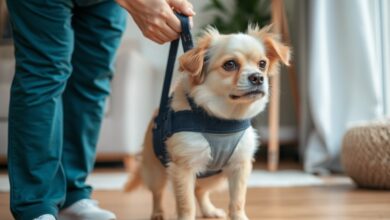American Foxhound Hunt Coyotes – Tips and Facts
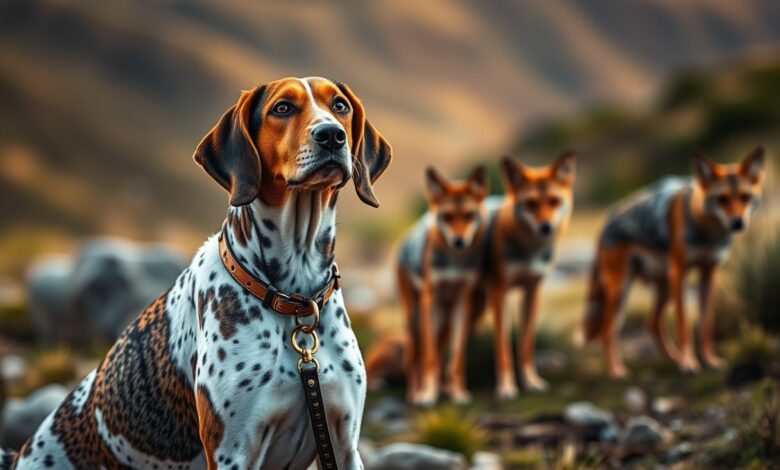
Most hunters appreciate the American Foxhound for its exceptional hunting ability, particularly when it comes to chasing coyotes. As you gear up for a hunting trip, it’s crucial to understand the best practices to ensure both your safety and success. Understanding coyote behavior, utilizing the Foxhound’s strong tracking instincts, and choosing suitable hunting grounds can drastically improve your experience. With this guide, you’ll gain important tips and fascinating facts that will enhance your approach to coyote hunting with your trusty Foxhound.
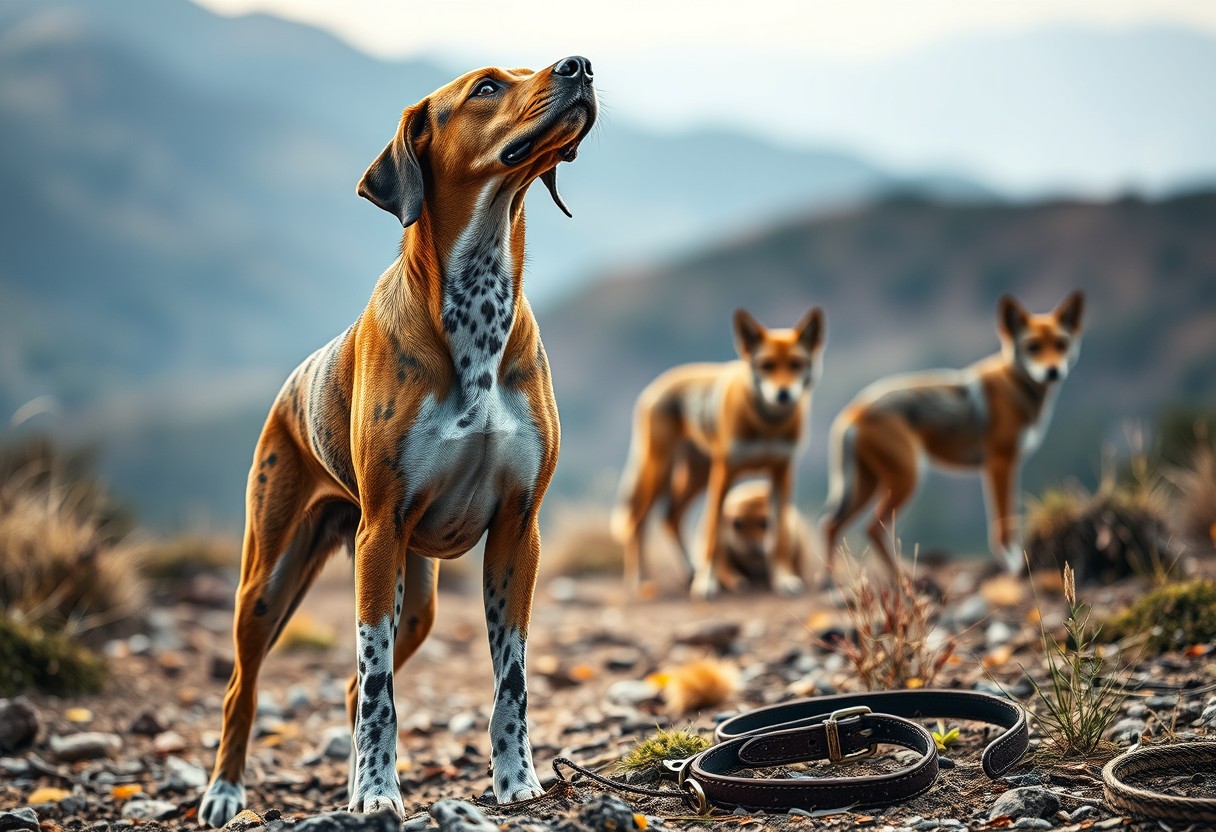
Key Takeaways:
- Hunting Skills: American Foxhounds are known for their keen sense of smell and endurance, making them effective in tracking and hunting coyotes.
- Training and Socialization: Proper training and socialization are crucial for American Foxhounds to work effectively during coyote hunts and to remain manageable around other dogs and wildlife.
- Safety Measures: Implementing safety measures, such as using GPS collars and hunting in pairs, is vital to ensure the safety of both the hounds and hunters during coyote hunts.
Understanding the American Foxhound
The American Foxhound is a breed known for its incredible stamina, impressive running ability, and keen sense of smell. Recognized for its loyalty and friendly disposition, this dog excels in various outdoor activities, making it a perfect companion for hunters and families alike. If you’re considering adding an American Foxhound to your household, understanding its unique traits is important to ensure a harmonious relationship.
Breed Characteristics
An American Foxhound typically features a sleek and athletic build, with long legs and a strong, agile physique. These dogs possess a short, dense coat, which can vary in color but often includes combinations of black, tan, and white. Known for their even temperament and social nature, they are both affectionate family pets and dedicated hunting companions. Your Foxhound will thrive with ample exercise and mental stimulation to keep them happy and healthy.
Hunting Instincts
An important quality of the American Foxhound is its keen hunting instincts. Bred specifically for hunting, this breed exhibits a strong prey drive and is known for its ability to track scents over vast distances. In your interactions with them, you’ll notice their high energy levels and unwavering focus during hunts, making them formidable partners in the field. It’s important to engage your Foxhound’s instincts safely when hunting coyotes to ensure a successful and enjoyable experience.
Another aspect to consider is the American Foxhound’s ability to adapt its hunting techniques, allowing it to effectively chase down coyotes. With their strong scent recognition skills, Foxhounds can identify and follow coyote trails, making them invaluable during a hunt. However, you must maintain control and provide proper training to mitigate any potential dangers, ensuring your Foxhound harnesses its skills without becoming overly aggressive. This balance will enhance your experience and solidify your connection with your remarkable hunting partner.
Preparing for Coyote Hunting
Assuming you’re ready to take your American Foxhound on a coyote hunting adventure, preparation is key. Ensure your dog is in peak physical condition and familiar with basic commands. Additionally, equip yourself with the necessary tools and knowledge about the hunting area. Studying coyote behavior and habitat can significantly enhance your chances of a successful hunt. Always prioritize safety for both you and your Foxhound, and follow local regulations regarding hunting practices.
Essential Gear
Essential items for coyote hunting include a reliable hunting rifle, appropriate ammunition, and a quality scope for accurate shots. Your Foxhound should also have a well-fitting harness and durable leash for safety. Don’t forget to carry a first aid kit for both you and your canine companion, along with necessary supplies like water, snacks, and a whistle for communication.
Training Your Foxhound
Coyote hunting requires different skills, and with the right training, your Foxhound can effectively track and pursue coyotes. Start with basic obedience commands, progressing towards more specialized skills such as scent tracking and recall. Ensure your dog is accustomed to the sounds of gunfire and working alongside you in the field.
Understanding the importance of consistent training and positive reinforcement is crucial for a successful hunting experience. Incorporate exposure to coyotes through scent trails or controlled encounters, helping your Foxhound learn to recognize their track and behavior. Be patient, as it takes time for your dog to develop necessary skills; however, with dedication and perseverance, your Foxhound will become a powerful ally in the hunt.
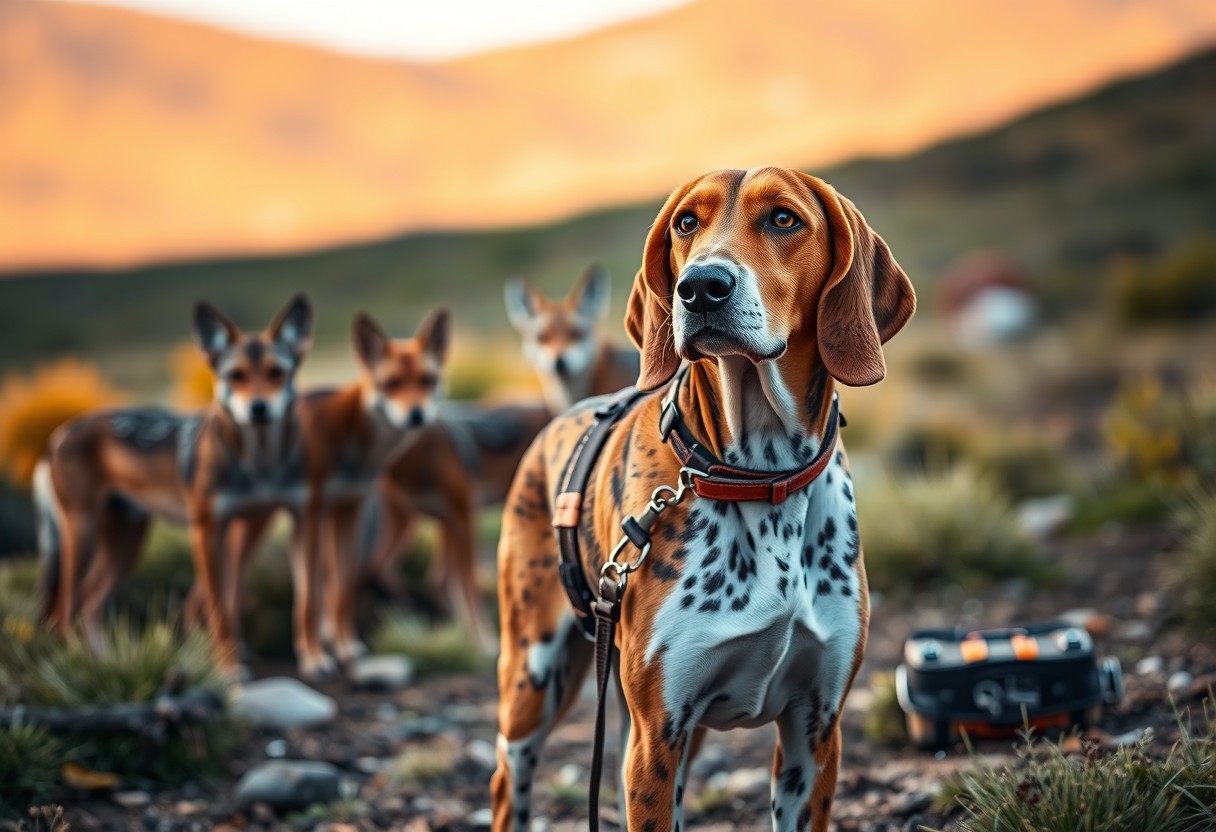
Effective Hunting Techniques
Your success in hunting coyotes with American Foxhounds largely depends on adopting effective techniques. Understanding their innate abilities and using them to your advantage can greatly increase your chances of a successful hunt. Whether it’s working as a team with your hound or employing specific tactics, maximizing your effectiveness is key. Remember to remain patient, observant, and adaptable to changing conditions in the field.
Hunting Strategies
With the right hunting strategies, you can enhance your coyote hunting experience. Use diverse tactics, including baiting and calling to attract coyotes. Working in pairs or small groups allows for better coverage of the hunting area while your Foxhound does the heavy lifting. Adjust your methods based on the landscape and coyote behavior for optimal results.
Tracking and Scent Work
Hunting with American Foxhounds allows you to utilize their advanced tracking and scent work to locate coyotes effectively. These dogs are renowned for their incredible olfactory senses, making them invaluable companions in the field.
Strategies to enhance tracking and scent work include managing wind direction to ensure your hound picks up the scents without interference. Develop your dog’s ability to recognize specific coyote scents through consistent training exposure. Engaging your hound by using lures, such as coyote urine or prey scent, can ignite their instincts and guide them during hunts. Bear in mind, safety and patience are paramount while allowing your hound to work the scent, especially in unfamiliar terrain, to avoid potential hazards.
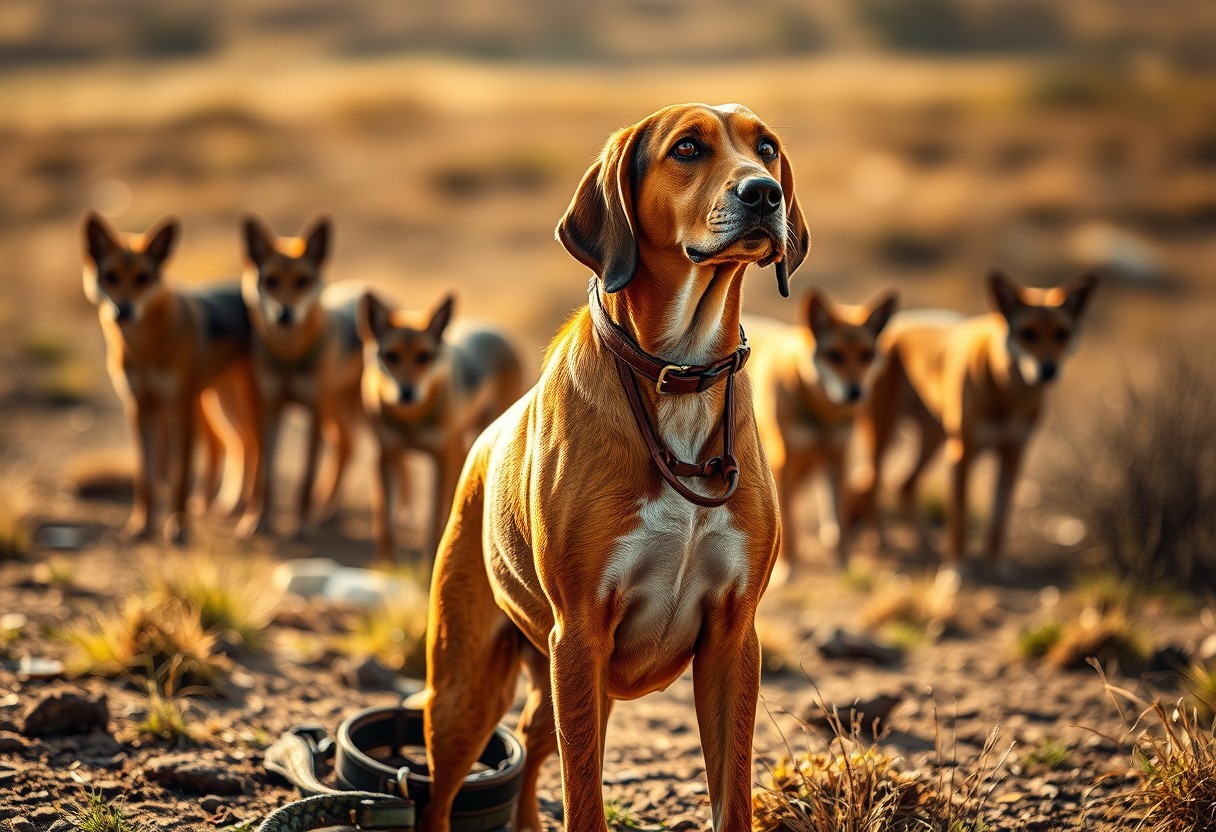
Safety Considerations
Unlike other forms of hunting, coyote hunting presents unique challenges that require careful attention to safety. Always prioritize your safety and ensure that your hunting area is clear of other people, pets, and livestock. Use appropriate gear, including blaze orange for visibility, and communicate your plans with others. Additionally, be aware of your surroundings and potential hazards, such as rough terrain or weather changes, to enhance your overall safety during the hunt.
Hunter and Hound Safety
Hound safety is paramount when hunting coyotes with your American Foxhound. Ensure that your hound is wearing a tracking collar and visible gear. Keep a close watch on their behavior and well-being, as they can easily become overwhelmed during an intense chase. Always be prepared for emergencies, such as injuries or encounters with wild animals, to protect both your hound and yourself.
Ethical Hunting Practices
Safety in ethical hunting means adhering to regulations and practices that promote conservation. You should always be aware of hunting seasons and bag limits to prevent overharvesting. Ensure that your aim is true and only take shots that guarantee a clean kill, minimizing unnecessary suffering to the animal. By following these guidelines, you contribute to a sustainable ecosystem while respecting wildlife.
Practices emphasizing ethical hunting are crucial not only for species conservation but also for maintaining the integrity of the hunting community. Ensure that you understand local laws and regulations, as violations can have serious consequences. Engaging in ethical hunting reinforces responsibility and respect for wildlife, ultimately protecting the interests of hunters and the habitats we cherish. Prioritize education on humane methods, effective tracking, and responsible hound handling to enhance your hunting experience while promoting a sustainable environment.
Coyote Behavior and Habitat
Not many people understand that coyotes are highly adaptable animals, able to thrive in various environments ranging from urban settings to deep wilderness. Their behavior is shaped largely by their habitat, influencing their hunting patterns, social structure, and territory. Recognizing the nuances of coyote behavior can help you when out on the hunt, allowing you to anticipate their movements and maximize your chances of a successful encounter.
Understanding Coyote Patterns
The key to effectively tracking coyotes lies in understanding their movement patterns, which are typically most active during dawn and dusk. By familiarizing yourself with these patterns, you can optimize your hunting times, increasing the likelihood of spotting them.
Habitat Locations
Habitat plays a crucial role in coyote behavior. In urban areas, you may find them lurking in parks or suburban backyards, while rural coyotes often occupy open fields and wooded regions.
It is vital to identify the specific habitats that coyotes frequent. They prefer landscapes that provide ample cover for hunting and shelter, such as brushy fields, open grasslands, and even suburban environments. Additionally, coyote populations tend to cluster near sources of food like farmland or areas with high rodent populations. Understanding these habitat preferences enables you to focus your efforts in locations where coyotes are likely to be active.
Post-Hunt Care for Your Foxhound
For every successful hunt, ensuring proper post-hunt care for your foxhound is crucial. This not only helps maintain their health but also improves their performance in future hunts. After a day in the field, your foxhound should be thoroughly checked and given the time they need to recuperate. Prioritizing their care is imperative for a strong bond and a happy hunting experience.
Health Check
Any time your foxhound returns from a hunt, a thorough health check is imperative. Look for signs of injury or irritation, particularly on their paws and ears. Check for ticks, bites, or rashes that can occur in the wilderness. Don’t overlook their hydration; make sure they drink water and replenish their energy with a nutritious meal.
Recovery and Rest
Post-hunt, your foxhound needs adequate time to recover and rest. A good night’s sleep is vital for their endurance and overall health. Ideally, provide a soft and quiet space for them to rest, away from distractions. Limit physical activities for a couple of days to allow their muscles to heal and prevent fatigue. Always monitor their behavior; any signs of discomfort may require a visit to the vet.
A well-rested foxhound is not only more alert but also less prone to injury in future hunts. It’s important to understand that recovery involves more than just sleep; proper nutrition and hydration play significant roles. Keeping an eye on your foxhound’s condition enhances their stamina and strength, ensuring they are primed and ready for the next adventure.
To wrap up
On the whole, hunting coyotes with an American Foxhound can be a rewarding experience, provided you equip yourself with the right knowledge and skills. You should prioritize understanding their behavior, utilizing proper gear, and practicing ethical hunting methods to ensure a successful outing. For additional insights, consider checking out this comprehensive guide on How To Hunt Foxes And Coyote :: theHunter: Call of the …. Happy hunting!
FAQ
Q: What is the best way to train my American Foxhound to hunt coyotes?
A: Training your American Foxhound to hunt coyotes requires a consistent and patient approach. Start with basic obedience training to ensure your dog responds to commands such as ‘come’, ‘stay’, and ‘leave it’. Gradually introduce scent tracking by allowing your dog to follow coyote trails during walks. Use positive reinforcement techniques to reward them when they exhibit the desired hunting behavior. Additionally, taking part in training sessions with experienced hunters or enlisting a professional trainer who specializes in hunting dogs can provide valuable insights and techniques. Remember to ensure your hound is well-exercised and in good health, as hunting can be physically demanding.
Q: What are some safety tips for hunting coyotes with my American Foxhound?
A: Safety is paramount when hunting coyotes with your American Foxhound. First, ensure your dog is equipped with a GPS collar to keep track of their location. Always hunt in pairs or groups for added safety and support. Familiarize yourself with the hunting area and avoid hazardous terrains or locations with heavy human activity. It’s imperative to ensure your hound has a reliable recall command to prevent them from wandering off after coyotes. Make sure to have a first aid kit handy for both humans and dogs in case of emergencies. Lastly, be aware of local hunting regulations and always practice ethical hunting to ensure a safe and responsible experience.
Q: What should I know about the behavior of coyotes when hunting with my American Foxhound?
A: Understanding coyote behavior is crucial for successful hunting with your American Foxhound. Coyotes are highly intelligent and adaptable animals that are typically most active during dawn and dusk, known as crepuscular activity. They often travel in family groups but can also be solitary, making them unpredictable. When hunting, pay attention to their vocalizations, which can indicate their presence or communicate to other coyotes. Familiarize yourself with signs of coyote activity such as tracks, scat, and den sites. Lastly, remember that coyotes can be wary and elusive, so maintaining a stealthy approach and allowing your hound to use its keen sense of smell can increase your chances of a successful hunt.



